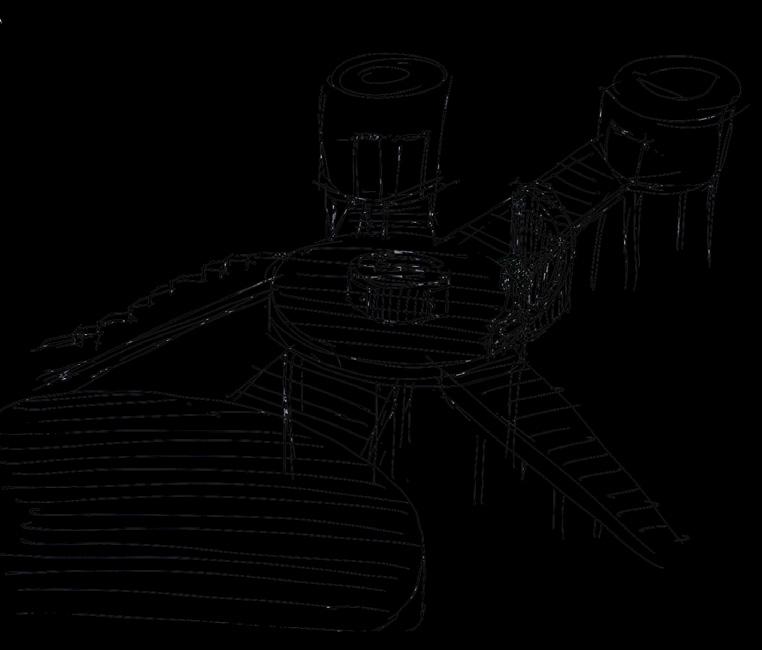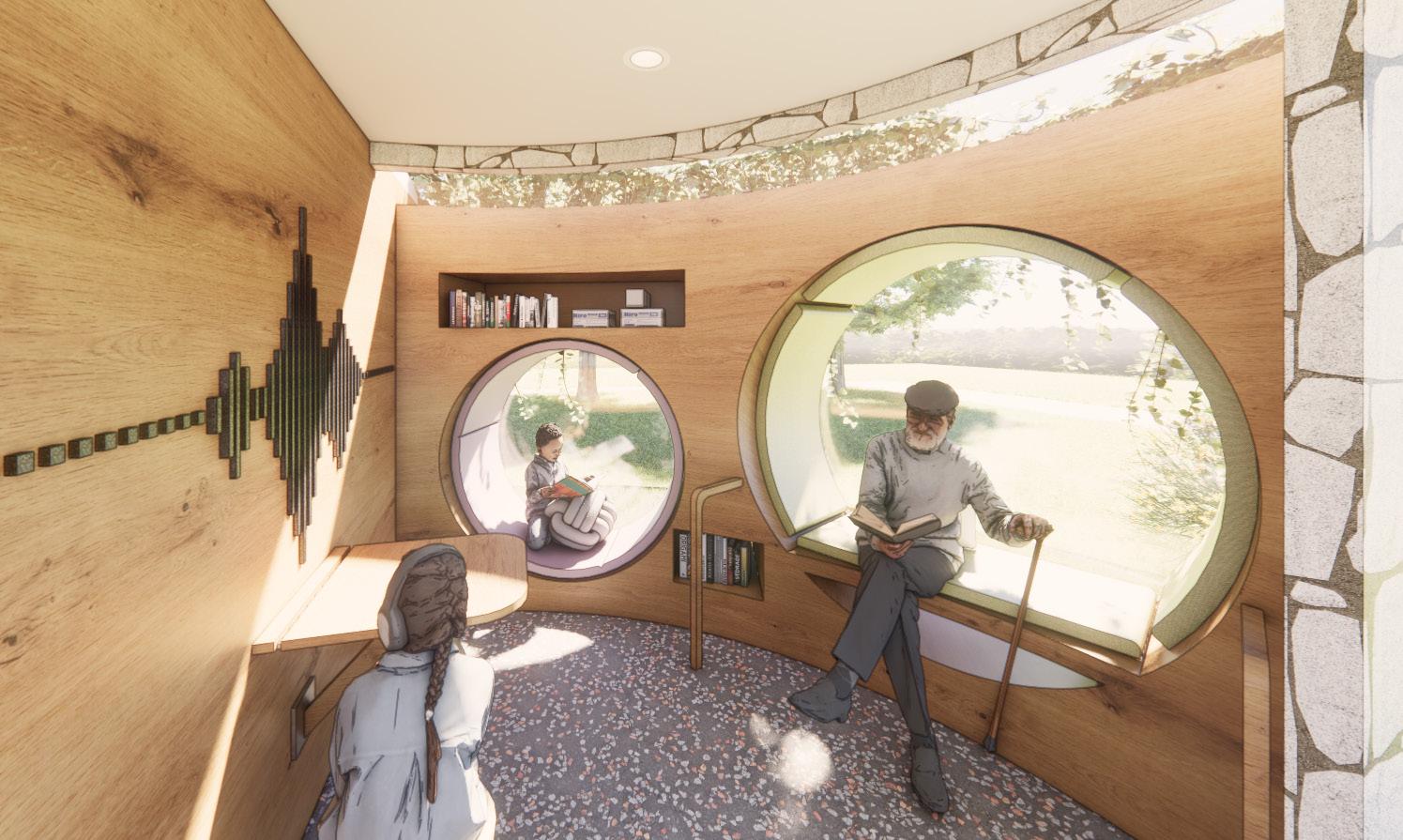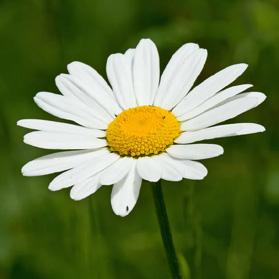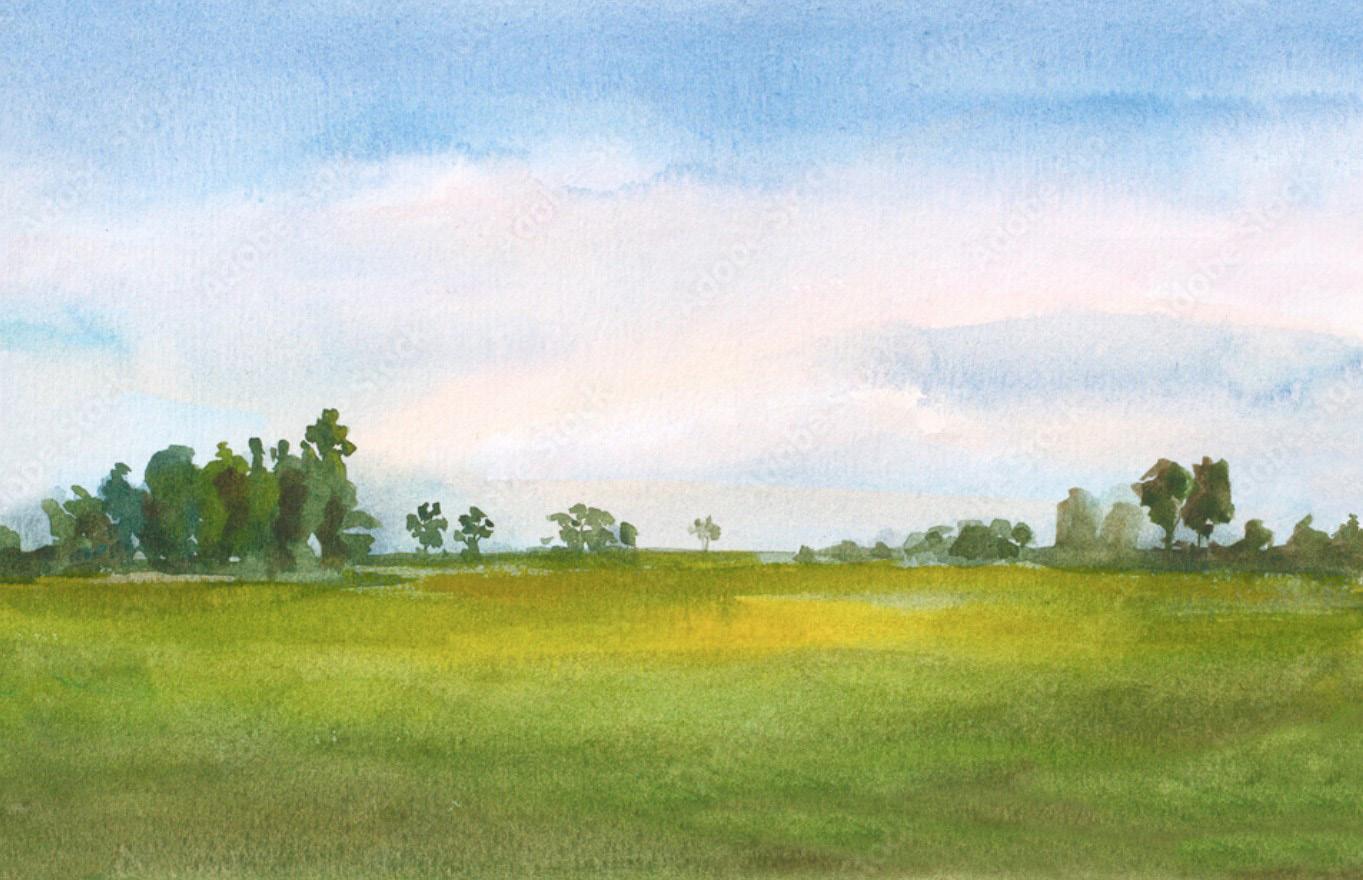Our intergenerational space features a circular infinity-inspired shape where two circles are colliding and coexisting together, one signifying young and another old. The focus was to create a space that bridged the gap between generations using music. Wide, level surfaces ensure easy navigation, while soft textures, and garden views enhance sensory engagement. Thoughtfully placed seating invites conversation, and interactive instruments captivate younger visitors without disrupting the tranquility. This inclusive design encourages exploration, reflection, and connection, providing a harmonious environment where all ages can coexist and thrive.
We considered how a local family within walking distance of the site would like to use this space intergenerationally, specifically
and their grandchildren. This intergenerational space uses interactive instruments to help unite generations through
or enjoying it. The space features a
and an
Symphony Grove
don’t stop the music
Studies have highlighted that the beginning of meaningful intergenerational interactions don’t happen spontaneously—structured events are key to bringing children and adults together to enable them to connect in a shared activity (Meyer, 2024). However, it is often in the unstructured, informal moments outside of these organized activities where the most meaningful interactions and friendships between older adults and younger children are likely to form (Lyndon & Moss, 2023).
Musical activities accomodate a broad spectrum of skills and ages, from simple skills like singing, which is well understood across both age groups, to more complex ones like playing instruments. These activities can take the form of structured events such as community choir practice, music trivia nights, live concerts of reimaged classics, retro dance parties, or story telling through music sessions. They can also unfold in unstructured moments, inspire each other during a jam session of interpreting same music differently, or playing music themed board games in the flex room. Not only it helps mulitple generations to bond, but also musical events improve individuals’ well-being (Jenkins, Farrer, & Aujla, 2021).

The intuitvely designed xylophone and floor-embedded piano opens opportunities for play and imagination. The playful infinity loop-inspired sculpture offers children a hidden space to share secrets. The combination of above offers felxibility and adaptability , which are important elements of intergenerational space (Nelischer, & Loukaitou-Sideris, 2023).
Accessibility
The space features a zero-threshold entrance and exit, and wheelchair manuverable rubber and concrete flooring, accomodating people of all abilities and ages.
Inclusivity
The storage rooms and flex rooms are equipped with movable furniture that can be easily rearranged for intimate, face-to-face intergenerational interactions. The stadium seating that faces the center, supports structured events such as a concert that foster meaningful connections across generations.
Safety
The soft rubber flooring in the central area allows kids to play without worry or discomfort. Handrails are provided in spots where individuals can sit and rest as needed.
Natural Elements
The space is framed by native bee-friendly greenery on the ceiling wood slats and seating. Most building materials, including wood and stone, are sourced locally to further integrate the space with its natural surroundings. It is also located inside a loop of paved walkway, which offers a wide range of activities.
The sensory wall featuring rough stone textures, offers a tactile experience for all visitors. A music waveform visualizer helps individuals with hearing impairments engage with the music, while the flex room is equipped with bone-conduction headphones allowing users to enjoy a personal music experience.
• Biggs, S., & Carr, A. (2015). Age- and Child-Friendly Cities and the Promise of Intergenerational Space. Journal of Social Work Practice, 29(1), 99–112. 10.1080/02650533.2014.993942
• Creating Meaningful Interactions for Young Children, Older Friends, and Nursery School Practitioners within an Intergenerational Project ProQuest. Retrieved from https://www.proquest.com/docview/2785484327/fulltextPDF?parentSessionId=yP45zoZaww2YYIoshKMWX%2BkwxyuluKcot9EuMLy2QZk%3D&pq-origsite=primo&accountid=27975&sourcetype=Scholarly%20Journals
• Jenkins, L. K., Farrer, R., & Aujla, I. J. (2021). Understanding the impact of an intergenerational arts and health project: a study into the psychological well-being of participants, carers and artists. Public Health, 194, 121. 10.1016/j.puhe.2021.02.029
• Meyer, J. Intergenerational Park Design for Active and Engaged Communities. Retrieved from https://research.qut.edu.au/designlab/projects/intergenerational-park-design-for-active-and-engaged-communities/
• Nelischer, C., & Loukaitou-Sideris, A. (2023). Intergenerational Public Space Design and Policy: A Review of the Literature. Journal of Planning Literature, 38(1), 19–32. 10.1177/0885412222109217




































